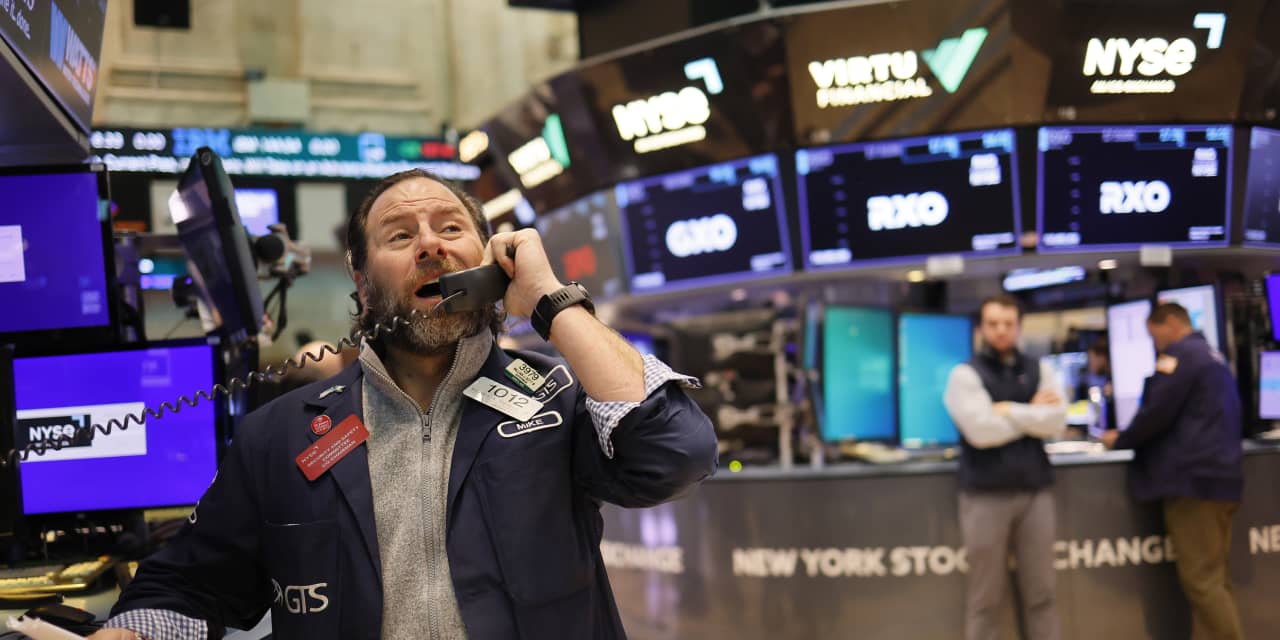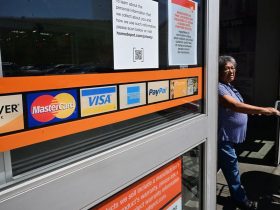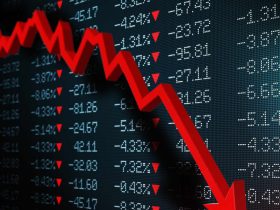The market’s fear gauge says to expect calm. The response of individual stocks to earnings has been anything but. Don’t be surprised if turbulence returns sooner rather than later.
The
S&P 500 index
rose 5.9% this past week, its best week since November 2022, while the
Dow Jones Industrial Average
advanced 5.1% and the
Nasdaq Composite
gained 6.6% after the Federal Reserve refrained from raising interest rates and a payrolls report showed the labor market cooling.
No wonder the
Cboe Volatility Index,
or VIX, which measures expected S&P 500 volatility and signals the degree of uncertainty, fell to 14.9, down from an October peak of almost 22. That’s a sign that investors, after a brief panic, have stopped worrying and learned to love the market again.
The contrast with individual stocks could hardly be greater. While market volatility has slipped, shares of companies reporting earnings have been flying all over the place.
Roku
(ticker: ROKU),
Shopify
(SHOP), and
Palantir Technologies
(PLTR) gained more than 20% after their reports, while
Paycom Software
(PAYC),
ON Semiconductor
(ON), and
Estée Lauder
(EL) dropped 19% or more.
On average, though, the market has done more punishing than rewarding. Shares of companies that beat earnings and sales estimates have advanced just 0.3% on average, according to Evercore ISI data, while companies missing forecasts on both have dropped 4.8%. That 5.1-percentage-point gap is wider than the historical average of 4.1 points, while the gain is smaller and the loss is bigger than they typically have been.
The numbers haven’t been bad. Earnings per share for S&P 500 companies have beaten estimates by 6.9% so far this reporting season, per Evercore, as sales have come in slightly ahead of forecasts and profit margins have been higher than expected. The problem for stocks is that the S&P 500 is already up double digits for the year, reflecting these profits, and investors are always looking to the future.
“What I believe is driving the volatility is that [earnings] growth is priced in for 2024 and 2025, and if growth does not materialize, equities have to price down,” says Spencer Hakimian, founder of Tolou Capital Management.
And price down they have. ON Semi, for example, cited weakening automotive chip demand for its disappointing fourth-quarter profit guidance. Its stock dropped 22%. It wasn’t alone in its pessimistic outlook. From Oct. 3 through Nov. 2, no company raised fourth-quarter earnings-per-share guidance when reporting earnings.
“If the forward guidance is weak, really watch out,” Hakimian says.
For now, the stock market is taking its cues from the bond market, where the 10-year Treasury yield, whose spike had caused investors to panic, fell 0.289 percentage point to 4.557%, its largest one-week decline since March. The issue is that still-high interest rates could slow the economy and put 2024 and 2025 earnings at risk. And that alone should mean a more volatile market.
“Given that we’re past the phase where governments are trying to keep rates really low, a high-teens VIX would be fairly normal,” says David Miller, co-founder of Catalyst Capital Advisors. “You can expect an 18 to 19 VIX level.”
Fasten your seat belts. It’s going to be a bumpy ride.
Write to Jacob Sonenshine at [email protected]
Read the full article here











Leave a Reply